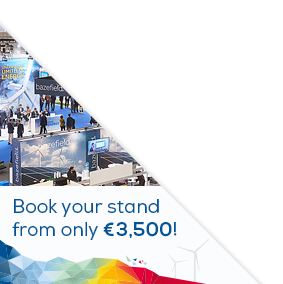Posters
Siblings:
ProceedingsProgrammeProceedingsSpeakersPostersContent PartnersElectrification StageMarkets TheatreR&I ActivitiesStudent DayProgramme Committee & abstracts reviewersPresenters dashboardCome meet the poster presenters to ask them questions and discuss their work
We would like to invite you to come and see the posters at our upcoming conference. The posters will showcase a diverse range of research topics and provide an opportunity for delegates to engage with the authors and learn more about their work. Whether you are a seasoned researcher or simply curious about the latest developments in your field, we believe that the posters will offer something of interest to everyone. So please, join us at the conference and take advantage of this opportunity to learn and engage with your peers in the academic community. We look forward to seeing you there!

PO097: Offshore wind integration for decarbonization of oil & gas assets
Kristoffer Klaussen, Power system design engineer, ABB
Abstract
Recently, companies are making efforts to reduce their greenhouse gas (GHG) emissions. Deepwater offshore oil & gas facilities typically use natural gas for their power demands which also results in emissions. To reduce such emissions, several oil & gas companies have recently been trying to support their power systems with renewable energy sources such as offshore wind farms. This work summarizes results of technical studies, evaluating the feasibility of integrating local offshore wind power production to offshore oil and gas assets. The main aim of the studies is to reduce GHG emissions of the offshore facilities by utilizing wind power, without affecting the operation of the facilities. Since it is crucial to have very high uptime, the power system cannot explicitly rely on variable wind power. To ensure reliable operation, conventional gas turbine generators (GTGs) are used for grid forming and stability. The number of GTGs in operation and their minimum loading limits affect the utilization of wind power. Therefore, the effects of both wind farm sizing and minimum GTG loading on GHG emissions and wind farm utilization are investigated in this study. The results show that the integration of dedicated wind farms with capacity of 40% to 110% of the rated asset load can lead up to 40% GHG emission reduction. Asset specific sensitivity analysis showed that decreasing the size of the wind farm, increases the emissions but leads to higher utilization of the wind farm. Further, simulations indicate that decreasing the minimum loading of GTGs further increases both wind farm utilization and reduction in GHG emissions.







